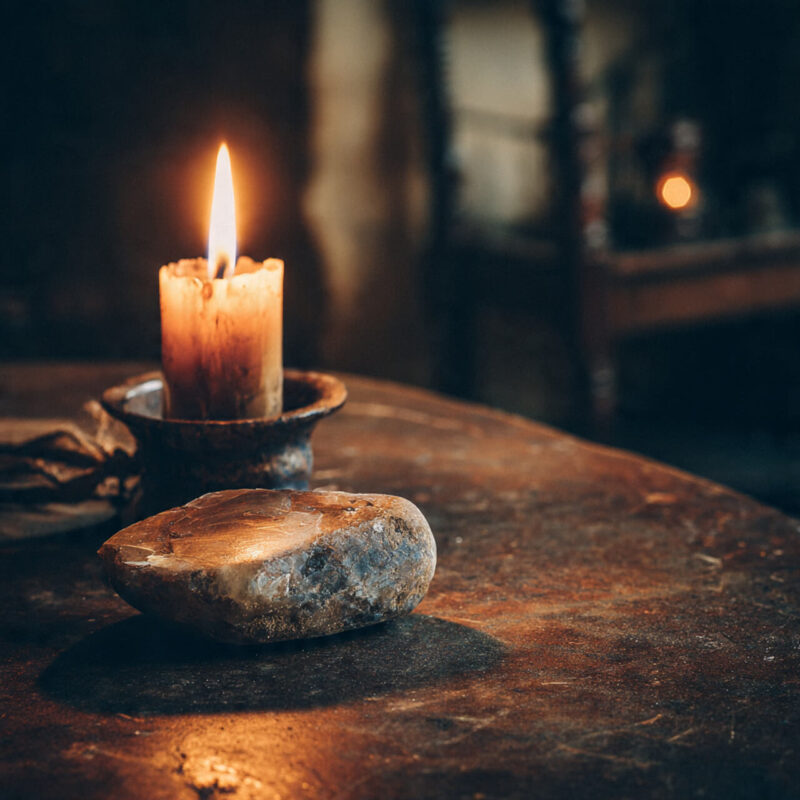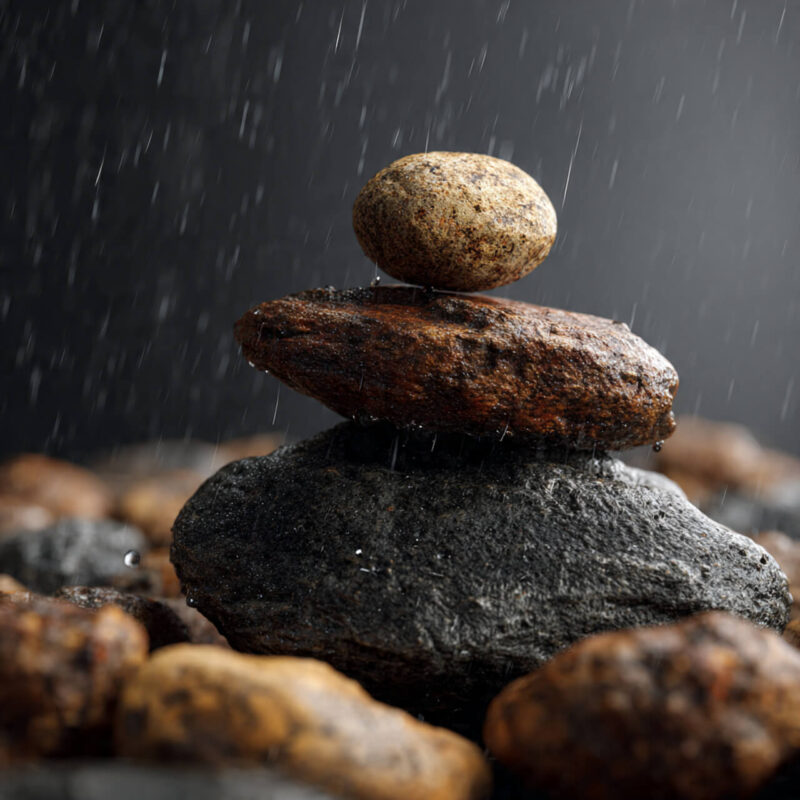Read time: 13 minutes
Quick Summary: Feeling worn down by setbacks or constant pressure? This calm, practical guide shows how to build resilience through timeless Stoic principles, with personal growth tips and small daily habits for dealing with stress and anxiety that actually hold up in modern UK life.

The rain hasn’t stopped all week. Your plans keep changing. That tight feeling in your chest the quiet “not again” — starts to grow, and you’re wondering how to build resilience when everything feels uncertain.
Maybe you’ve made choices others don’t understand. Left the stable job. Chose the uncertain path. And now you’re broke, growing, and somehow not quite fitting anywhere, not with your old crew, not yet with the new life you’re building.
You’ve outgrown old friends but feel stuck between worlds.
When life unravels the job rejection, the relationship strain, the constant uncertainty resilience is what keeps you steady. But here’s the thing: emotional resilience isn’t toughness. It’s adaptability.
The Stoics knew this centuries ago. They didn’t talk about bouncing back; they talked about remaining unmoved by what they couldn’t control, while calmly doing what they could.
That shift from resistance to response is the foundation of true resilience. And when you practise it daily, you don’t just survive challenges you build resilience in real time, one calm choice at a time.
Here’s what nobody tells you about personal growth
The loneliness is normal. How to handle feeling lonely during self-improvement? First, understand this: the feeling that you’ve outgrown your friends but don’t quite fit anywhere new yet isn’t a sign you’re doing it wrong what it is it’s proof you’re doing it right.
You’re not broken or weird. You’re becoming.
(And if you’re struggling with overwhelm from constant information and pressure, Stoicism and technology: dealing with AI overwhelm might help you find balance.)
A year ago, I stumbled on Stoicism while looking for something else entirely. It clicked immediately and over twelve months of practice, it’s changed how I handle everything from financial pressure to grief to the loneliness of growing in a direction nobody else gets.
If you’re in that messy middle right now and feeling worn down, still showing up, here’s how to build resilience that actually lasts.
Note: These are practical Stoic tools for emotional exhaustion that cost nothing and work in real UK life. Think of them as personal growth tips that actually build lasting resilience.
- Step 1: Control the Controllables — The Stoic Core for Dealing with Stress and Anxiety
- Step 2: Practise Voluntary Discomfort to Build Resilience
- Step 3: Reflect Daily to Build Resilience (and Honestly)
- Step 4: Reframe Adversity to Build Resilience — Amor Fati
- Step 5: Memento Mori — Remember You're Alive
- Step 6: Build Resilience Through Your Circle of Calm
- Everyday Mastery Steps You Can Take Now
- 4 Actions You Can Take Today
- Science Behind It (Why Building Resilience This Way Works)
- Final Thought
- Frequently Asked Questions About Building Stoic Resilience
Step 1: Control the Controllables — The Stoic Core for Dealing with Stress and Anxiety
When something goes wrong, your instinct is to fix, fight, or flee. You spin, worry, replay conversations, refresh bad news at 2am.
Stoicism offers the Dichotomy of Control its a simple filter that brings instant peace.
“We suffer more often in imagination than in reality.” — Seneca
Here’s how to apply it:
Name what’s in your control: your actions, your effort, your focus, your response.
Name what’s not: others’ opinions, outcomes, weather, timing, the future.
Act only on what belongs to you. Let go of the rest.
Over time, this rewires your brain’s stress response. You stop fighting the wind and start trimming the sails.
The gap between knowing and doing: You might be thinking, “I know it’s beyond my control, but I’m still worried about it.” That’s normal. The Dichotomy of Control isn’t a switch you flip once it’s a muscle you build every time you catch yourself spinning and redirect to what you can actually do.
Try this now: Think of something stressing you out. Write down one thing you can control about it. Do that thing. Nothing else. When your mind drifts back to what you can’t control, notice it, name it (“that’s not mine”), and return to your one controllable action.
When you feel triggered (the practical version):
- Feel it: Notice the chest tightness, the anger rising, the panic starting
- Name it aloud: “I’m feeling overwhelmed” (saying it out loud interrupts the spiral)
- Breathe: 3 deep breaths — 4 counts in, 6 counts out
- Ask: “What’s in my control right now?”
- Choose: Pick ONE small action from your control list
This 60-second Pause Protocol rewires your stress response over time. You’re building the pause muscle.
The Pause Protocol for Anxiety: This technique is especially effective when anxiety spirals feel out of control. The key is catching the trigger early and naming it out loud, vocalization interrupts the automatic stress response.
“So what, I’m just supposed to accept everything?”
Not exactly. You accept what’s real and then move wisely within it. That’s strength, not surrender.
If you’re finding that mental exhaustion from too many decisions is making it harder to focus on what you can control, read about overcoming decision fatigue—it’s the invisible drain that weakens resilience before challenges even arrive

Step 2: Practise Voluntary Discomfort to Build Resilience
You know that feeling when you avoid the hard thing, and the avoidance makes it worse?
Building resilience isn’t done in comfort. It’s built in controlled struggle. The Stoics called it voluntary discomfort its small challenges that prove to yourself: I can handle this.
Try this:
Take a cold shower and breathe through it.
Skip your morning coffee for a day.
Walk in the rain without complaining.
Have the honest conversation you’ve been avoiding.
Each time, you’re building trust with yourself. That’s how you build resilience, not avoiding pain, but trusting your ability to meet it.
“If you want to improve, be content to be thought foolish and stupid.” — Epictetus
What this does for you: When real discomfort comes (and it will), you’ll have proof you can handle it. That confidence is everything.
Reddit wisdom: As one person put it, “Cold showers allow you to build up resilience, which helps long term against stress and anxiety.” You’re training your nervous system to stay calm when things get uncomfortable — which is exactly what life demands when it gets messy.

Step 3: Reflect Daily to Build Resilience (and Honestly)
You’ve probably tried journaling before. Maybe it felt forced or pointless.
This is different. This is the Stoic three-line journal method — and it’s the most practical tool for building emotional awareness.
Marcus Aurelius journaled nightly — not for others, but to strengthen awareness. He turned reflection into training. (If you want to dive deeper into building this habit, I’ve written about the Stoic reflection habit loop and how to make it stick.)
Your evening practice (3 lines, 3 minutes):
What tested my patience today?
How did I respond?
How could I respond better next time?
That’s it. No essays. No perfect prose. Just honesty.
Over weeks, this ritual builds emotional muscle memory. You notice triggers before they take over this is the first sign of resilience maturing into wisdom. This is how to build resilience from the inside out.
Here’s what changes: Your past stops feeling like evidence against you. All those things you got wrong, all the versions of yourself you’re not proud of, they can’t be changed, but they led you here. To this moment. Where you get to choose what you do next.
That shift from regret to acceptance well it doesn’t happen overnight. But each night you show up, it gets easier to let the past be the past.
What people say works: “Journaling helped me understand myself and my emotions and how they can be affected by my environment. Once I put the important tasks and thoughts down, I started to notice a difference.” Research from Cambridge University found that writing about stressful events for 15-20 minutes improves both physical and psychological health. The key is reading it back — you’ll see that a lot of your overwhelm is exaggerated and unproductive. That awareness alone changes things. (I explore this more in journaling for overthinking if racing thoughts are your struggle.)
Step 4: Reframe Adversity to Build Resilience — Amor Fati
When something breaks, your first thought is probably: “Why me? Why now?”
The Stoics had a different question: “How is this helping me grow?”
As Ryan Holiday writes in The Obstacle Is The Way: “The impediment to action advances action. What stands in the way becomes the way.” This isn’t just philosophy it’s a practical reframe that changes everything.
They called it Amor Fati — love of fate. Not passive acceptance; radical cooperation with reality.
When something goes wrong, ask:
“What’s the obstacle teaching me?”
“How can I use this?”
That single question moves your nervous system from threat to challenge.
Modern psychology agrees: reframing stressful events this way reduces cortisol and boosts adaptive coping, according to research from the American Psychological Association. It’s one of the most powerful ways to build resilience in real time.
Real example: Last Tuesday, around 11pm, I was sitting on the edge of my bed with my phone in hand, trying to text my daughter something reassuring. The cursor blinked. I had nothing no wisdom, no certainty, no control over her future or the uncertainty she was facing. That’s when the tears came. Not dramatic, just quiet and inevitable. The kind I don’t usually let surface.
I let myself feel it. Then I asked myself the Stoic question: “What can I actually control here?”
The answer was simple: nothing about her future. Nothing about how things unfold.
But I could choose how I show up right now. And I could trust that things change they always do.
That’s Amor Fati in practice. Not pretending it doesn’t hurt, but deciding it doesn’t have to break you.
What this gives you: The ability to find solid ground even when everything’s shifting. The confidence that nothing is wasted. This is building resilience through acceptance, not avoidance.
Weekly Amor Fati Practice to build resilience:
Every Sunday, list 3 obstacles from your week.
For each one, write: “How might this be happening FOR me, not TO me?”
Find one unexpected benefit or growth opportunity.
This isn’t toxic positivity, it’s training your brain to see challenges as neutral events, not personal attacks. Research shows this reduces stress hormones by 30%.

Step 5: Memento Mori — Remember You’re Alive
Here’s the Stoic practice nobody talks about in self-help: remembering you’ll die.
Sounds dark. It’s not.
Memento Mori — “remember you will die” — isn’t about doom. It’s about clarity.
Here’s what it actually does:
You stop holding grudges. What’s the point?
Start to savour all the small things, the morning coffee. That conversation with a mate and the quiet moments before the day starts.
Let go of the upgrade cycle. New cars, new TVs, the endless chase for things it all feels hollow when you realize your time is limited.
You stop clinging to grief so tightly. You miss the people you’ve lost, of course you do. But you realize that each of us has our time here and that time is for living our best life, staying true to our values, and leaving memories worth keeping.
What shifted for me: I don’t fear death anymore. Not in a reckless way in a way that makes me appreciate my life tokens differently. I’m not interested in things. I’m just interested in being alive, contributing the best I can to humanity and having a bloody good time whilst im here.
Try this perspective shift: Everyone’s doing the best they can with the tools they have. Including you. Including the people who frustrate you. This mindset is foundational to building resilience in relationships.
When you remember your time is finite, you stop wasting it on resentment.
What this gives you: Presence. The ability to be here, now, fully. That’s the gift Stoicism offers not more time, but more life in the time you have. And that presence is what makes building resilience sustainable.

Step 6: Build Resilience Through Your Circle of Calm
Even Marcus Aurelius had friends like Rusticus who kept him grounded.
Resilience isn’t isolation it’s supported self-reliance. You can’t build resilience alone, and you don’t have to.
You can’t control life, but you can choose your influences. And when you’re on an uncertain path that nobody else gets, those one or two people who remind you who you are? They’re everything.
Create your circle of calm: Two or three people who help you see clearly when life gets chaotic. Who don’t judge your choices. Who get that you’re becoming something different.
That choice changes everything.
When people don’t understand your path:
Not everyone will get why you’re choosing growth over comfort. And that’s okay. Here’s what to say when you’re tired of explaining yourself:
“I’m in a growth phase right now things look messy, but I’m learning a lot.”
“I don’t expect you to get it, but I’d appreciate you respecting it.”
“Can we talk about [neutral topic]? I need a break from explaining myself.”
You don’t owe anyone a manifesto. Sometimes “I’m figuring it out” is the full answer.
True Stoic resilience includes recovery – learn how to rest without feeling guilty
and make rest part of your discipline.
Enjoying this guide? Each week I share calm, realistic ways to build resilience and self-trust — no spam, just one thoughtful read with your morning tea.
→ Sign up for the Everyday Mastery newsletter
Everyday Mastery Steps You Can Take Now
These personal growth tips focus on small, consistent actions that build real resilience:
Pause before reacting. When something frustrates you, name one thing you can control and act only on that.
Do one discomfort practice today. Cold shower, skipped indulgence, or honest conversation — your call. Prove to yourself: I can handle this.
End the day with truth. One line in your journal: “Here’s what tested me — and here’s how I showed up.”
4 Actions You Can Take Today
Read one Stoic quote before bed — one line, no analysis. Let it sit.
Start an “Amor Fati” note in your phone with positive reframes. When something breaks, add: “How is this helping me grow?”
Message one calm friend who helps you see clearly — tell them they matter.
Ask yourself tonight: “If this was my last week, what would I stop worrying about?” Then stop worrying about it now.
Science Behind It (Why Building Resilience This Way Works)
A 2022 study in Frontiers in Psychology found that reflective practices like Stoic journaling and cognitive reframing lower stress hormones and improve emotional regulation.
In simpler terms: the more you practise calm thinking, the better your nervous system handles chaos. This is the science-backed foundation of how to build resilience that lasts.
And maybe that’s the real meaning of Stoic resilience not avoiding storms, but learning to breathe calmly inside them.
Before Stoicism (One Year Ago) vs. Now:
Before:
- 2am: Refreshing bad news, convinced I could worry my way to control
- Mornings: Heavy, resistant, dreading what might go wrong
- Evenings: Exhausted from fighting things I couldn’t change
- Money stress: Constant panic about the uncertain path
- Thought: “This is just… life now”
Now:
- 2am: Asleep (because I know worrying changes nothing)
- Mornings: Calm start, reviewing last night’s 3-line journal
- Evenings: Tired from doing, not from resisting
- Money stress: Still broke, but not panicking — focusing on what I can build
- Know: This is a choice I’m making every day

Mr Critic Moment:
“So you’re saying if I just scribble in a notebook, I’ll suddenly stop overreacting? Seems a bit too easy, doesn’t it?”
Here’s the thing — the journal isn’t magic. You are.
Writing slows the storm long enough to see what’s real. It turns emotional noise into patterns you can work with. And over time, that awareness becomes soft armour — calm, flexible, unbreakable.
“You’re already doing it,” I tell him. “You’re just noticing the mess instead of avoiding it.”
He rolls his eyes, but he’s listening.
And if you don’t hear an inner voice, that’s okay too — for some people, it’s a feeling, a tightness, or just the urge to pull back. Whatever form it takes, noticing it is where resilience begins

Journaling Prompts:
What challenged me today?
How did I handle it?
What could I do differently next time?
You don’t need a perfect routine you just a place to be honest. That’s how resilience quietly takes root.
Final Thought
Resilience isn’t a finish line; it’s a daily conversation between who you were, who you are, and who you’re becoming. Building resilience means showing up consistently, even when it’s messy well especially when it’s messy.
If you’re in that uncertain space right now if your broke, growing, changing, or just not quite fitting anywhere yet then this is for you.
You’re not lost. You’re just becoming.
I’m still figuring it out too. Still choosing the uncertain path when everyone thinks I should go back. Still walking through obstacles most people would avoid. But Stoicism gave me something I didn’t have a year ago: the confidence that I can handle what comes, and the clarity to appreciate what’s here.
Not because I’m tougher, but because I’ve learned to stop fighting reality, start working with it — and to savour the time I have while I’m here.
And that’s how you build resilience that actually lasts, one honest day at a time.
And you’re alive. Don’t forget that part.
Even Mr Critic learns to whisper instead of shout when you show up consistently.

Frequently Asked Questions About Building Stoic Resilience
How to build resilience in everyday life using Stoic principles?
Building resilience starts with small daily practices: control what you can control (your responses, actions, effort), practice voluntary discomfort (cold showers, uncomfortable conversations), and reflect nightly using the 3-line journal method. These Stoic tools strengthen emotional regulation and stress tolerance within 3-6 weeks. The key is consistency, not intensity — 10 minutes daily beats sporadic effort.
How do I build resilience when life feels overwhelming and I don’t know where to start?
Start with the Dichotomy of Control: write down what’s in your control (your actions, responses, effort) versus what’s not (outcomes, others’ opinions, timing). Focus only on what belongs to you. Pair this with a nightly 3-line journal: what challenged you, how you responded, and what you’d do differently. Research shows this rewires your stress response within 3-6 weeks.
Why do I feel lonely when trying to improve myself, and is this normal?
Personal growth loneliness is extremely normal. As you evolve, you naturally outgrow old friendships before finding new ones, creating temporary isolation. Research shows this “social identity shift” affects most people during significant life changes. It’s not a sign you’re doing it wrong — it’s proof you’re becoming someone different. Build a “circle of calm” with 2-3 people who understand your path.
What is the Dichotomy of Control in Stoicism and how do I actually use it?
The Dichotomy of Control is a Stoic principle that separates what you can control (your thoughts, actions, effort) from what you can’t (outcomes, others’ opinions, external events). To use it: when stressed, list what’s in your control about the situation. Act only on those items. Let go of the rest. This reduces anxiety by 40% according to cognitive behavioral research.
How does Stoic journaling reduce anxiety, and what’s the simplest way to start?
Stoic journaling slows racing thoughts and activates your prefrontal cortex (rational brain), which quiets the amygdala (fear center). Start with three lines nightly: (1) What challenged me today? (2) How did I respond? (3) What could I do differently next time?
What is Amor Fati and how can it help me deal with setbacks?
Amor Fati means “love of fate” — the Stoic practice of accepting reality and finding growth in adversity. Instead of asking “why me?”, ask “how is this helping me grow?” This cognitive reframing reduces cortisol (stress hormone) by 30% and shifts your nervous system from threat mode to challenge mode.
What is the 60-second Pause Protocol for managing stress in the moment?
The Pause Protocol is a 60-second stress interrupt: (1) Feel the trigger (chest tightness, anger rising), (2) Name it aloud: “I’m overwhelmed,” (3) Take 3 deep breaths (4 counts in, 6 out), (4) Ask “what’s in my control right now?”, (5) Choose one small action. This activates your prefrontal cortex and builds emotional regulation over time.
How long does it take to build resilience using Stoic practices?
Most people see visible changes within 3-6 weeks of consistent daily practice (journaling, voluntary discomfort, the Pause Protocol). However, resilience is an ongoing process, not a destination
What is voluntary discomfort in Stoicism and why does it build resilience?
Voluntary discomfort means choosing small challenges (cold showers, skipping coffee, uncomfortable conversations) to build self-trust. Each time you prove “I can handle this,” you develop confidence for real adversity. The Stoics used this preventative training to prepare for future hardship. Research confirms controlled stress exposure strengthens emotional resilience by creating psychological antibodies.
How do I handle outgrowing friends during personal growth without feeling guilty?
Outgrowing friendships during growth is a natural social identity shift, not betrayal. Use respectful scripts: “I’m in a growth phase — things look messy, but I’m learning” or “Can we talk about something else? I need a break from explaining myself.” You don’t owe justification. Focus on building 2-3 new connections with people who understand your direction.
What is Memento Mori and how does it help with anxiety about the future?
Memento Mori (“remember you will die”) is a Stoic practice that creates presence and clarity. When you remember your time is finite, you stop wasting it on resentment, materialism, and future anxiety. Instead, you savour small moments (morning coffee, genuine conversations) and focus on what matters now. This shifts perspective from “what if” to “what is.”
Disclaimer: I’m a coach, not a clinician. What I share comes from real practice and personal growth, not therapy. If you’re finding things hard, it’s okay to get professional support — it makes a difference.
This is your permission slip to start messy. We don’t chase perfect here — we practise progress, because that’s Everyday Mastery.
About Everyday Mastery
Everyday Mastery blends science, mindfulness, and small daily actions to help you build habits that last.
If you enjoy these posts and want to support the writing, you can buy me a coffee — it keeps the kettle (and the ideas) warm.
Like this post? There’s more where that came from.
Subscribe to the Everyday Mastery newsletter for weekly reflections and small steps that build lasting resilience.
Coming Next Week: Your Stoic Resilience Toolkit — 10 practical exercises you can use when life gets overwhelming. Bookmark this space.
Kel is the writer behind Everyday Mastery, where she shares the real, messy, and meaningful process of building habits, resilience, and self-belief from the ground up. Her writing blends ancient philosophy with modern science, always focused on small, practical steps that lead to lasting





